Friday 30th September to Friday 7th October 2022
I was sad to leave the beautiful Seychelles but also keen to push on as we plan to complete the circumnavigation and be home in Bristol around June of next year. The next destination is Cape Town with the first leg being around 800 miles to Mayotte, a small French island lying between the top of Madagascar and mainland Africa. After that 1200 miles south down the notorious Mozambique Channel to Richard’s Bay in South Africa then, hopefully, short and gentle hops along the coast round to Cape Town where we aim to be by late November.
As I mentioned in my last blog the main worry about this passage was the ‘compression zone’ north of Mozambique, where the southeast trade winds coming across the Indian Ocean are funnelled around the top of the large land mass of Mozambique, causing not only strong winds but huge seas. For a small sailing boat it is the sea state that is actually more concerning than the strength of the winds (up to a certain point anyway). In increasing winds we reduce the amount of sail up to prevent the boat being pushed over too much. The bigger the seas, the higher the waves and the shorter the distance between waves, the more uncomfortable the ride is, with the boat rolling and pitching, making it hard to move around or cook meals. If the seas are too massive a boat can be completely overwhelmed.
The actual passage plan was pretty straightforward. To sail southwest along the rhumb line (ie a straight line on the charts) from Mahé to Mayotte but, as far as possible, keeping south initially to avoid bumping into any of the small islands along the way and to allow us to get a better wind angle should we need to head more north later in the passage. The southeast wind would be mostly on the port beam (ie directly across the left side of the boat) but if the seas and wind got too strong we could turn towards the west and with the seas and wind coming more from behind it would be an easier and more comfortable sail.
We had been watching weather forecasts avidly for the last few weeks. One potential weather window appeared when we didn’t feel quite ready to leave. Over the next few days the ‘window’ didn’t look quite so good and even Des, the weather guru, said it looked risky. One boat decided to head off despite this and encountered 5 to 6 metre waves, their large yacht was knocked over and their life raft self-inflated (although they managed to retrieve it). Thankfully they made it safely to Mayotte, in an impressive 4 days 6 hours.
We were anticipating at least a 6 day passage and coinciding with our being ready (psychologically as well as practically) a good weather window appeared with winds to a maximum of 25 knots (with stronger gusts up to 30 knots) and waves a maximum of 2.5 metres. Des agreed, with the proviso ‘I suspect it will not be as benign as it appears but here’s hoping’.
Checking out of the Seychelles was done over two days and was the most convoluted, time consuming and expensive process we’ve encountered so far on our travels, requiring the help of our agent Jude, with trips to and fro between the maritime security office in town and immigration and customs in the port area, before we eventually had our departure document officially stamped and were approved to leave the Seychelles.
As we left the anchorage at Eden island we called up Victoria Port Control to advise them of our departure from the Seychelles and they kindly wished us a safe passage to Mayotte. Instead of leaving we sneaked around the top of Mahé and dropped anchor in Beau Vallon bay on the other side of the island to make an early start the next morning. Hecla and Endorphin were planning to head off 24 hours after us.
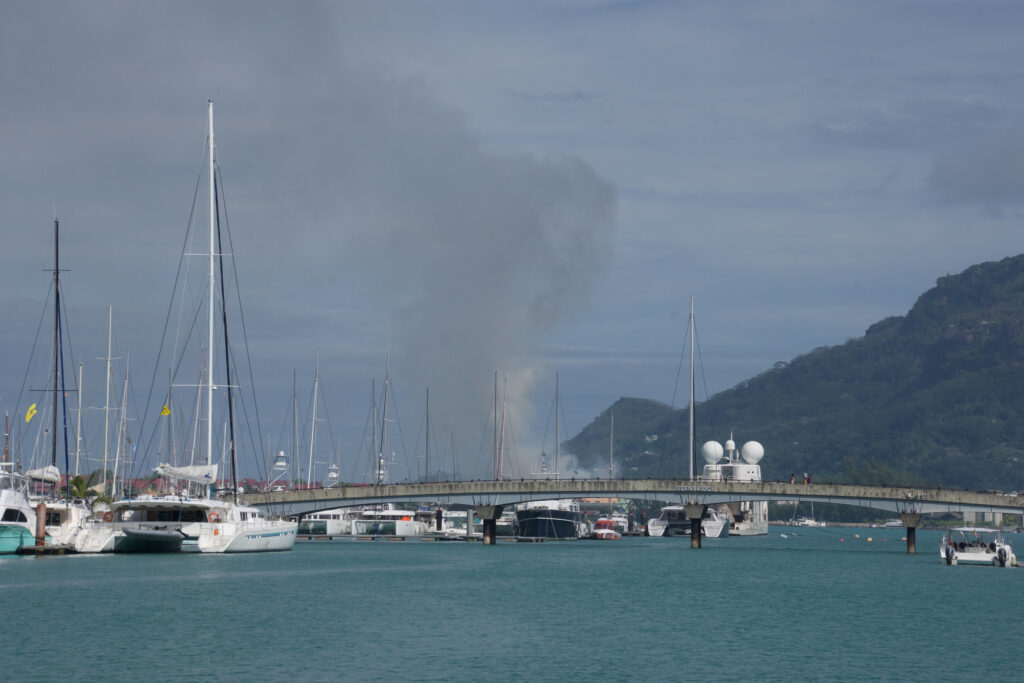
It was a beautiful, bright, sunny morning as we raised the anchor the following day, and headed out past several small fishing boats in the bay using seine nets to encircle and trap shoals of fish.
For the first two days of the passage we had gentle winds and a pleasant sail, my body getting used to being back at sea and getting accustomed again to night watches and napping during the day to catch up on sleep (Hugh seems to have none of these problems… sailing the oceans he is in his element). I tried fishing, putting out a line to trail behind us with a lure on the end, but had no bites on this passage – disappointing as fresh fish is so delicious, but at the same time a relief as I hate killing the fish. At dusk we would eat supper in the cockpit, usually a meal defrosted from the freezer, and listened to music as the sun dropped below the horizon. At night we had clear, star-filled skies with a crescent moon which set before midnight.
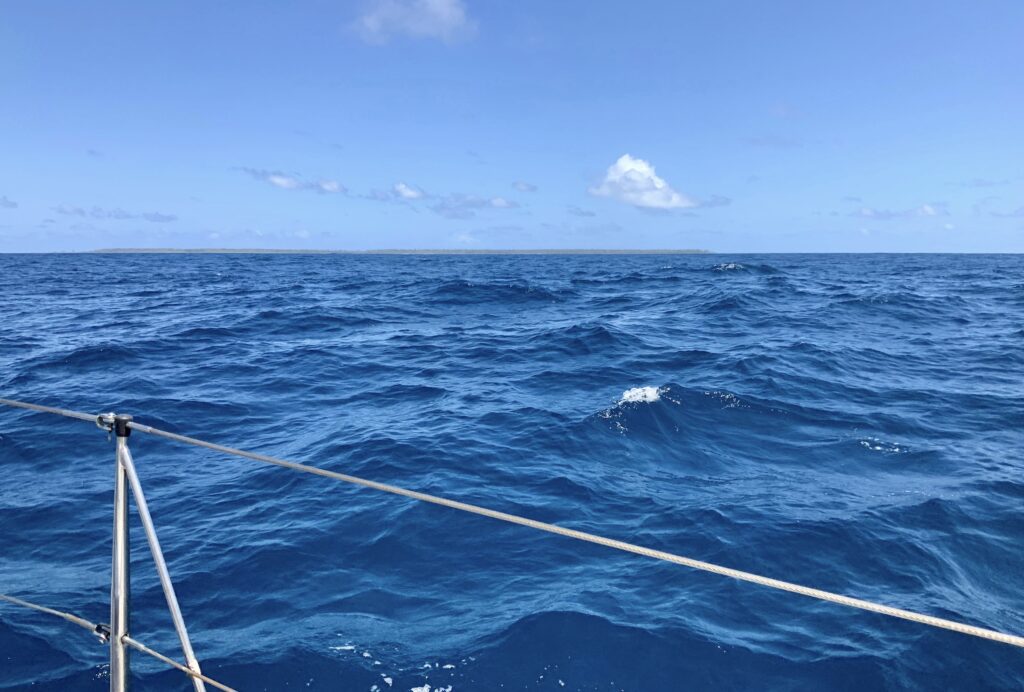
On the third day the winds, as anticipated, gradually started to increase with steely grey seas and drizzle, then later in the day heavy rain. With winds gusting up to 30 knots we recorded a boat speed of 10.8 knots, albeit momentarily, a record for Vega. The fourth day was the most difficult, with fully reefed foresail and mainsail we surged along in the strong winds and big seas, chaotic waves sometimes hitting us on the port side, rolling Vega violently from side to side. At one point the waves were over 3 metres, occasionally breaking over the boat and flooding the cockpit. Mostly though Vega just rides up over them quite happily.
The following two days the weather gradually eased, the sailing became more comfortable and the heavy cloud cleared to sunshine.
On our last full day at sea I woke to a gloriously sunny day, a gentle wind and almost flat sea. We were sailing beautifully! It was just a shame we seemed to be heading in the wrong direction to be able to reach Mayotte due to a strong current taking us too far north… eventually the motor went on to get us heading in the right direction.
My daughter Charlotte asked me what were the best, the worst and the funniest moments of the trip. The best, of course, was the arrival in Mayotte, waking on the final day to find we had arrived at the pass into the lagoon which surrounds the islands of Mayotte.
The worst was on the fourth day when everything seemed to go wrong. Big seas flinging Vega around. Hugh had to crawl along the side to the bow to retrieve our spare anchor which had come loose, then again to secure the dinghy which was sliding around. He got back to the cockpit soaked. Then the anemometer which measures wind speed and direction at the top of the mast stopped working. The pump which empties the heads (ie the loo) decided to give up too. I went to get a tin out of a cupboard on the port side of the saloon and, as the boat rocked, another 20 tins came flying out across the boat, including a jar which broke leaving glass and green pesto all over the carpet. Hugh cleared it up whilst I quietly wept.
The funniest was, I suppose, when I woke from a deep and refreshing sleep to find I had slept through a night of high drama on board Vega. Hugh had been on watch in the early hours of day 6 at sea as we approached and were heading directly towards the small island of Astove, one of the outer islands of the Seychelles. He decided to pass it to the north, partly because it was safer with the wind from the south-east (to the south would mean a lee shore with more risk of being blown onto the island) but also because a large tanker was coming up behind us which was passing the island to the south. It was a pitch black, moonless night and he couldn’t see the island but the wind seemed to be pushing Vega round towards it even as he tried to steer away. He tried repeatedly to wake me to help him navigate as the charts are not always reliable but I was so deeply asleep he couldn’t rouse me. In the end he had the bright idea to put the radar on, which clearly showed the land mass, so he was reassured we weren’t going to end up wrecked on this remote island.
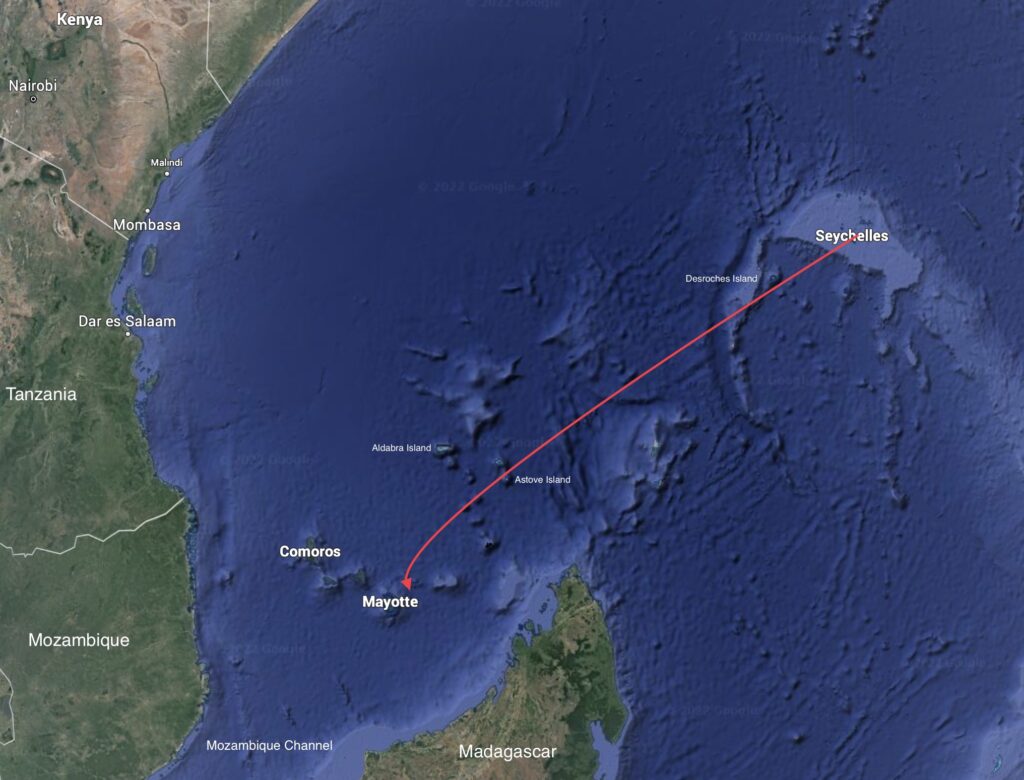
The passage took us 7 days in the end. A few days of quite unpleasant conditions but we think we got off lightly. We saw a few large cargo ships and tankers on AIS but otherwise were alone. Endorphin arrived the afternoon before us, despite leaving the day after… the advantage of being 54 foot rather than 37. Jon on Hecla dropped anchor a few hours after we did, having taken a route which went further north than ours, nearer to Aldabra Island, and announcing he’d had one of his best passages ever (Hecla is 40 foot).
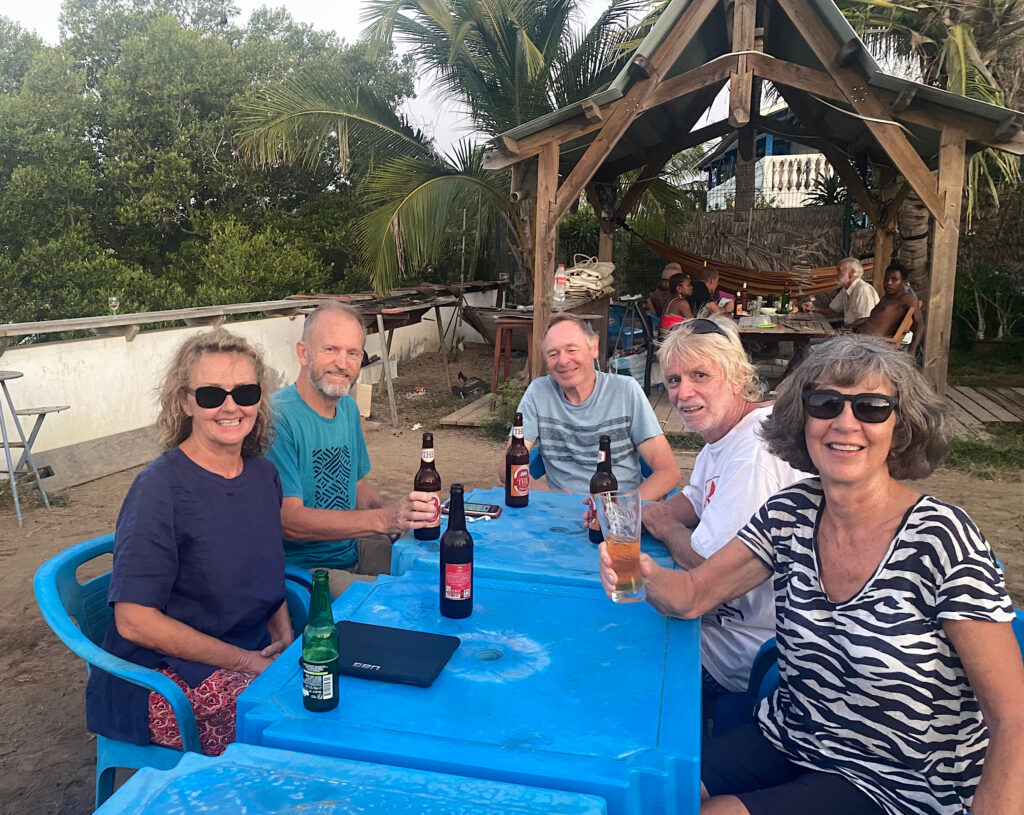
We are now enjoying the African-French ambiance of Mayotte, rather surprised to find ourselves in the EU. It feels like a major achievement to have completed this passage and I now feel much more ready to tackle the next two legs on to Cape Town. We’ll spend at least a week here, probably longer, with time to recover from the passage here and to get ready for the next one, with some serious passage planning necessary to fully understand the challenges of the 1200 miles on to Richard’s Bay in South Africa. Hopefully we’ll also have time to explore a bit of Mayotte… and to see some lemurs!
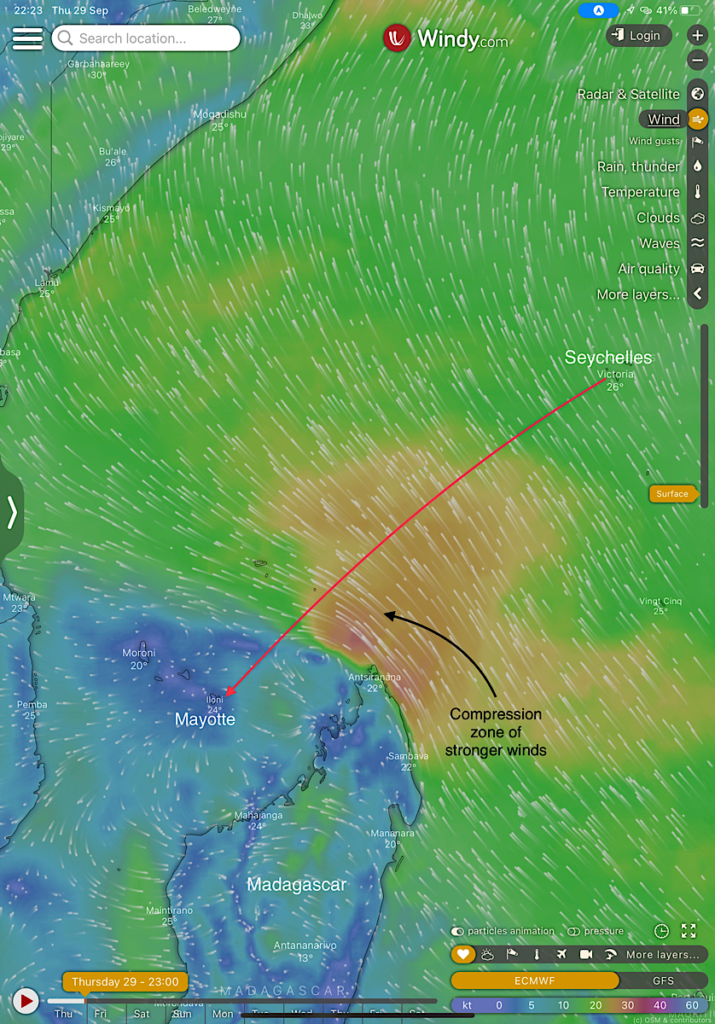
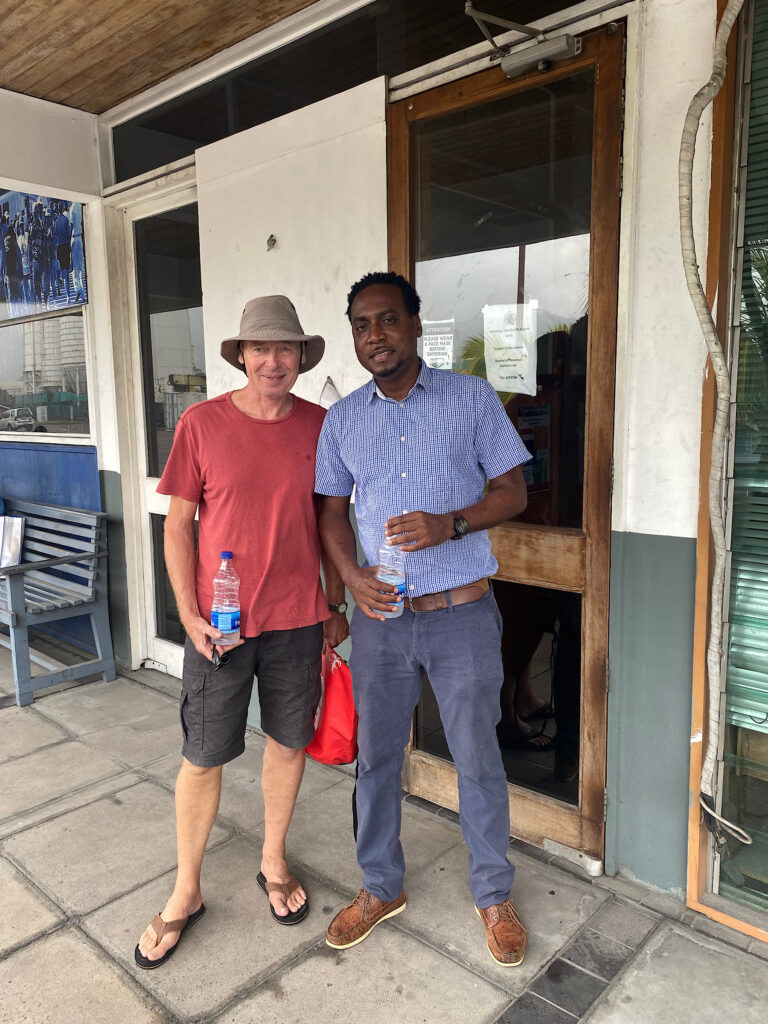

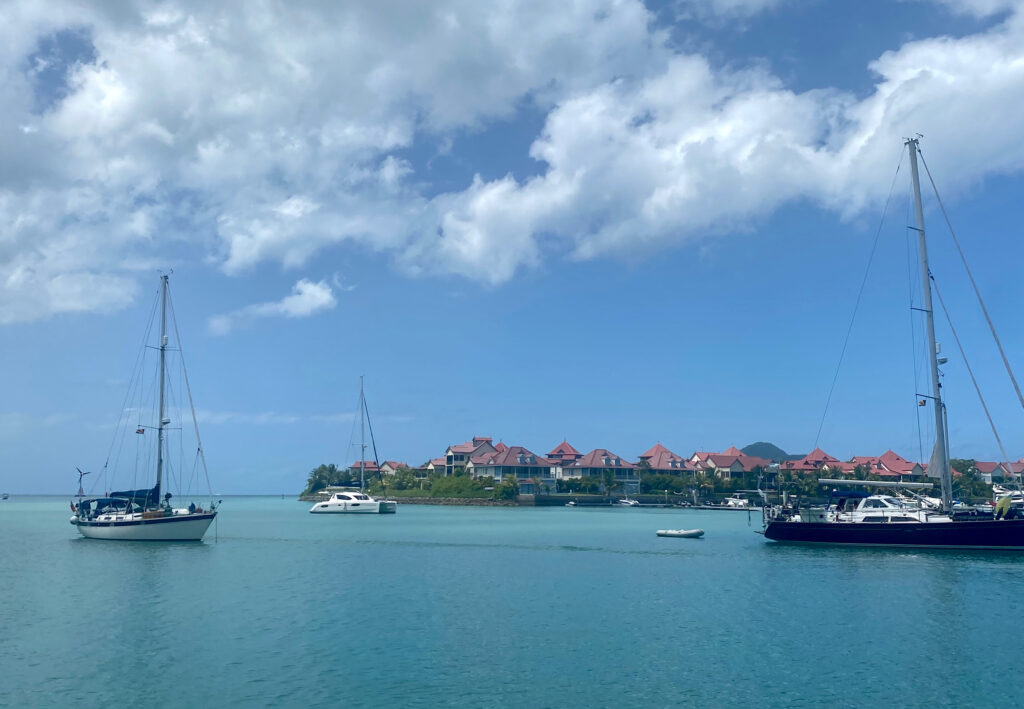
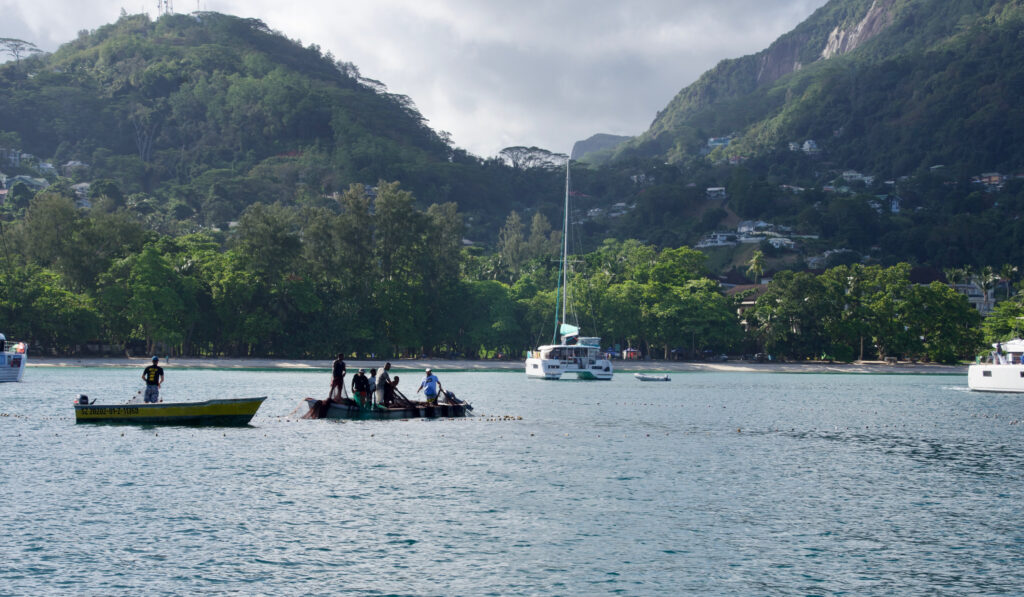
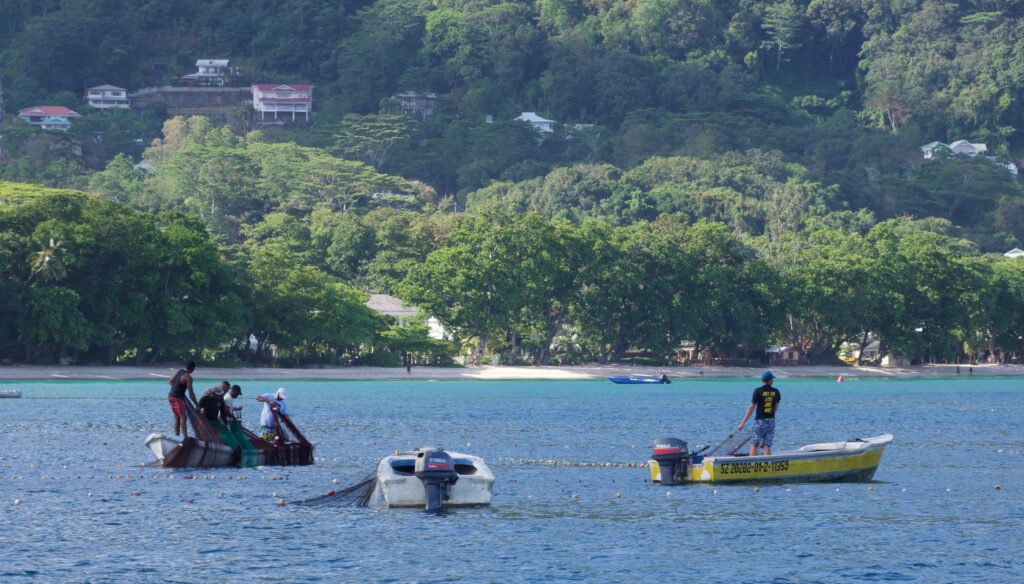
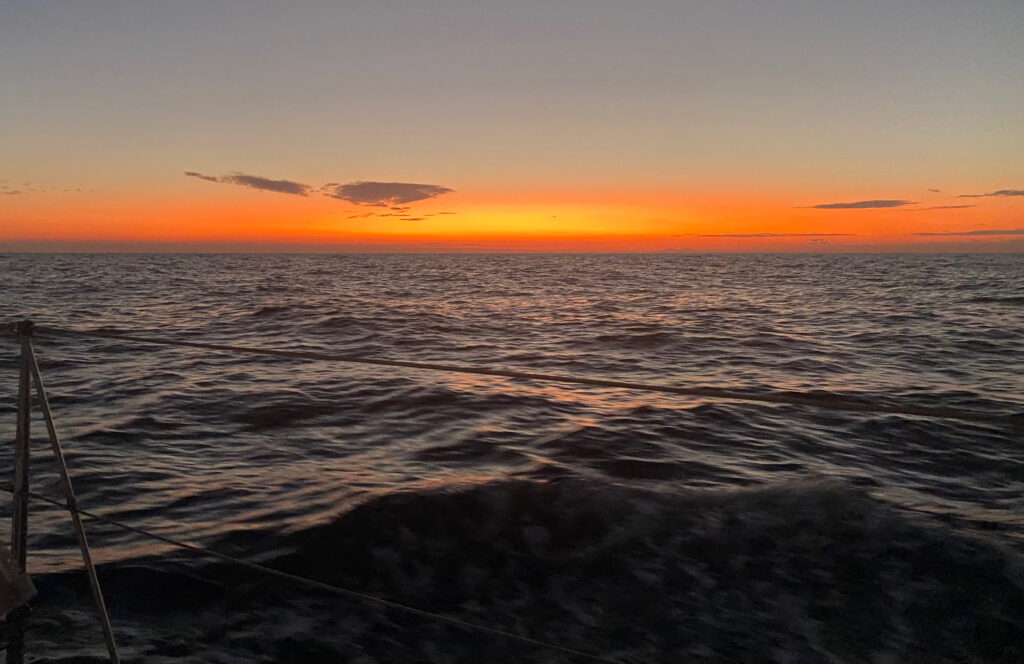
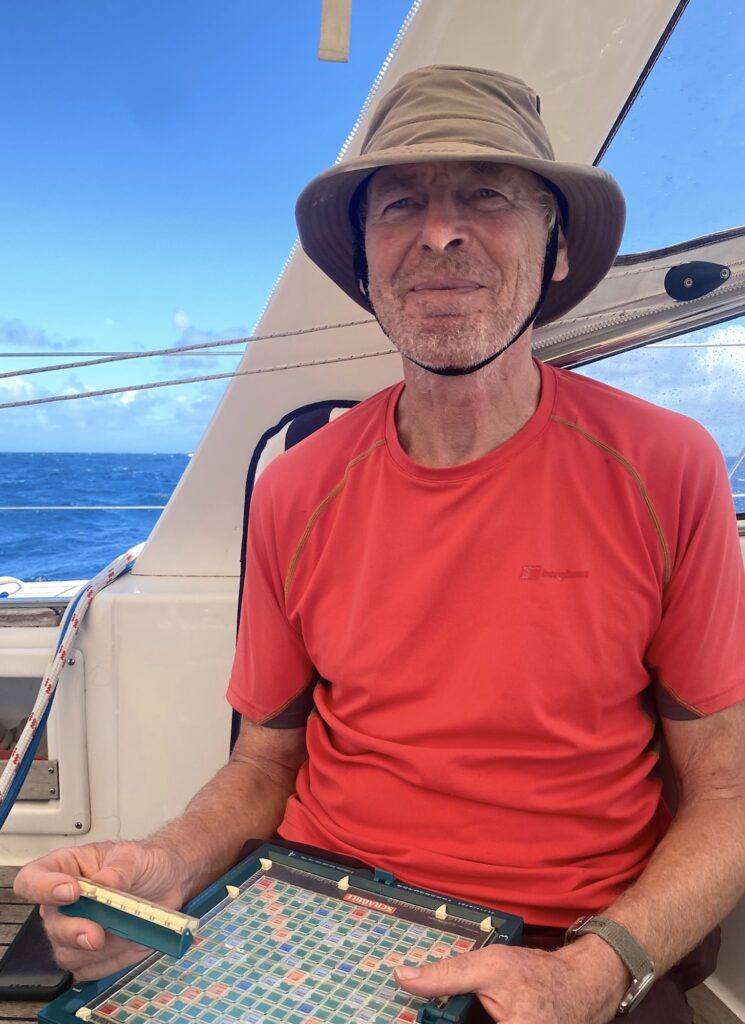
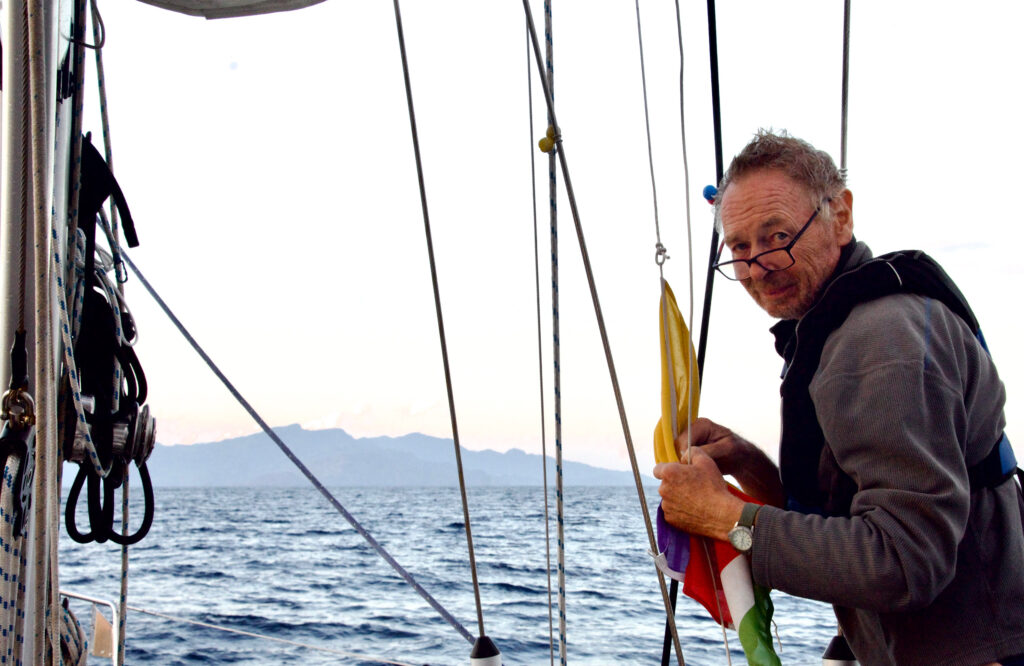
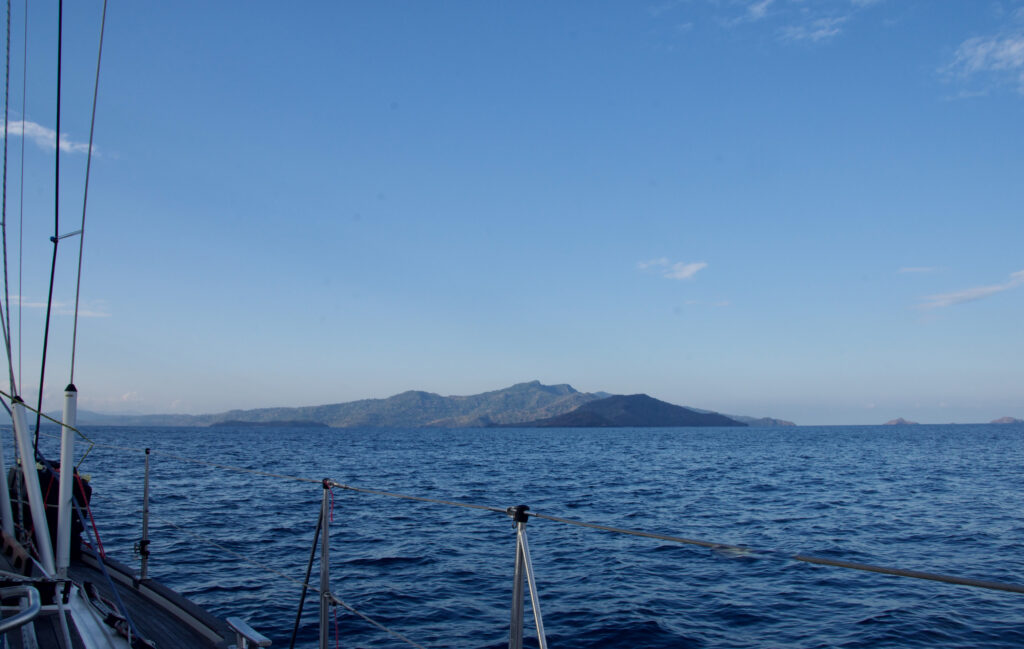
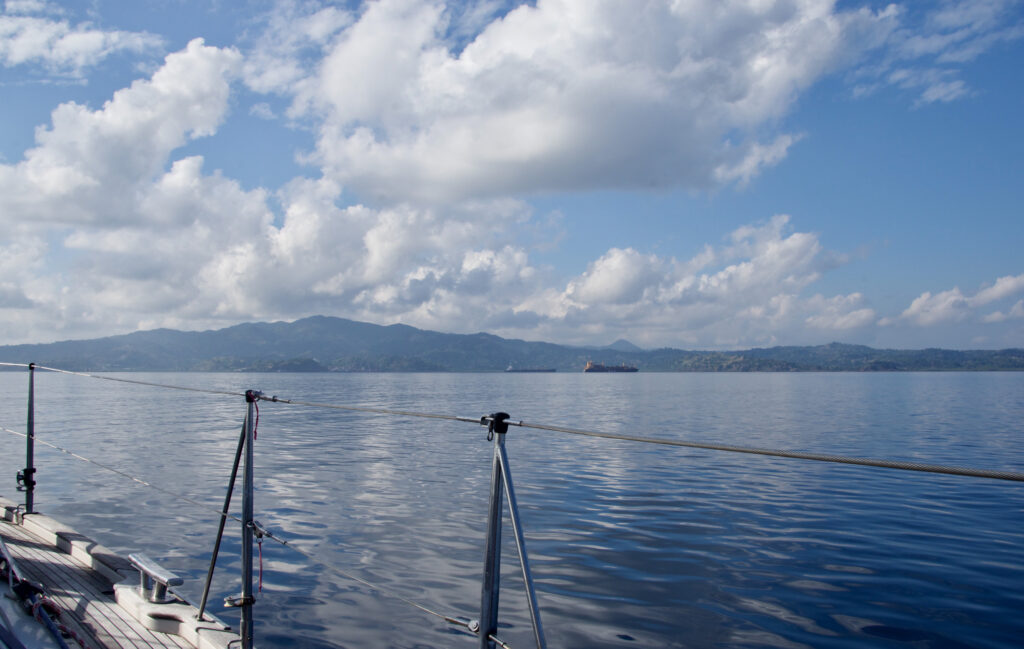
6 Comments
Steve
October 19, 2022 - 3:23 pmGreat blog as always Glad you had a reasonable passage given the potential of the ‘zone to make it risky. Love to both
annie
October 23, 2022 - 7:21 pmThanks Steve and love to you both too x
Gerard
October 20, 2022 - 4:31 pmHugh’s photo looks like an Old Man of the Sea.
Great Blog as always. Good Luck
Gerard
annie
October 23, 2022 - 7:22 pmHi Gerard. I don’t suppose any of us are getting any younger ☹️. Hope to see you soon x
Paul Bayley
October 21, 2022 - 7:33 amGlad the passage was not too bad, enjoy your down time ready for the next leg
Paul
annie
October 23, 2022 - 7:23 pmThanks Paul. Doing our best but not looking forward to the next leg much x